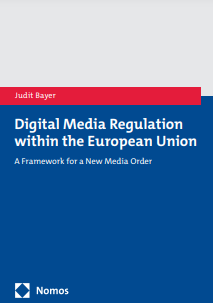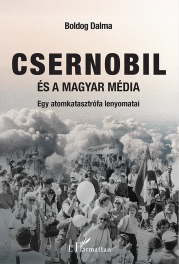Contents – Spring 2024
Bajomi-Lázár, Péter – Boldog, Dalma:
Bajomi-Lázár, Péter – Boldog, Dalma:
The telegraph and the internet
Media scholars studying the origins and impacts of the rise of the internet and exploring interactions between communication technology and society often seek historical analogies. The parallels offered by comparisons of the electronic revolution marked by the telegraph network and the digital revolution marked by the internet are particularly often remarked. This paper follows this tradition. Based on a critical review of the literature, it compares the histories of the telegraph and of the internet, the first and the last binary and digital networks. While finding a great number of similarities, it also suggests that they differ in their impacts upon journalism and its role in society, among other things.
Keywords: globalisation, internet, journalism, telegraph, technology history
The telegraph and the internet
Médiakutató Spring 2024 pp. 7-25 https://doi.org/10.55395/MK.2024.1.1
Barki, Bálint:
Barki, Bálint:
Media and penal populism
This paper is to explore the role of the media in the rise of penal populism. First, it delineates the concepts of criminal and of penal policies and situates penal populism in this context. Then it addresses the relationship between penal populism and media and outlines the social causes that may contribute to the rise of penal populism. Finally, it offers a description of two early penal populist moves in Hungary, with a focus on the reasons for their introduction and on their media coverage. Penal populism is a form of criminal policy whereby professional considerations are subordinated to political ones aimed at vote maximalisation—but ignoring the potential societal consequences
Keywords: crime representation, media, penal populism, public opinion, vote maximisation
Médiakutató Spring 2024 pp. 29-38 https://doi.org/10.55395/MK.2024.1.2
Gosztonyi, Gergely – Lendvai, Gergely:
Gosztonyi, Gergely – Lendvai, Gergely:
Deepfake and disinformation
This paper explores the relationship between deepfake and fake news through the lens of the law. It is divided into three main conceptual parts; first, it looks into the conceptual basis, then it explores the relationship between disinformation and deepfake, and finally it offers an overview of the relevant regulation in the context of deepfake fake news content (in particular, the US and the European regulatory trends). The paper pays particular attention to the legal perception of disinformation in the context of deepfake technology, highlighting the harmful social and legal outcomes involved. It is based on an overview of national and international regulations and of the relevant literature and includes the authors’ proposed solutions to the controversies generated by deepfake disinformation.
Keywords: AI Act, AI regulation law, deepfake, disinformation, freedom of expression
Médiakutató Spring 2024 pp. 41-49 https://doi.org/10.55395/MK.2024.1.3
Farkas, Eszter – Farkas, Attila:
Farkas, Eszter – Farkas, Attila:
“Ukrainian migrants, migrant migrants”
After the outbreak of the war in Ukraine, a partially different government communication and media discourse on immigration emerged in Hungary, the Hungarian government communicating a significantly more inclusive narrative about the refugees arriving from Ukraine than before. Based on the “model minority” myth, our research aim was to find out whether this different media and political environment has led to changes in individual attitudes, too. To answer this question, we conducted focus group discussions in which we presented different types of media content to the participants and asked them to reflect on the issue of immigration. Our findings suggest that different attitudes towards different groups of migrants from Ukraine and from the Arab and African countries can be captured mainly by the usage of the word “migrant,” which justifies the effectiveness of changing government communication.
Keywords: focus group, immigration attitudes, model minority myth, national elections, war in Ukraine
“Ukrainian migrants, migrant migrants”
Médiakutató Spring 2024 pp. 53-65 https://doi.org/10.55395/MK.2024.1.4
Sebestyén, Attila:
Sebestyén, Attila:
Kracauer’s Quality: The “Humanistic” Approach of Content Analysis
This paper focuses on Siegfried Kracauer’s essay on qualitative content analysis published in the mid-20th century. It offers a brief overview of the complexity of the author’s oeuvre which was first forgotten and then rediscovered by posterity. More particularly, it asks the question of how Kracauer preserved his ‘humanistic’ way of thinking and his sense for the tensions of meaning in the founding era of communication and media studies dominated by the social sciences. This study looks into the conceptual level of content analysis but does not examine an actual corpus as it it does not seek to apply the methodological insights practically and immediately, which is to be done in another paper.
Keywords: history of communication and media research, humanistic approach, methodological reflection, qualitative content analysis, Siegfried Kracauer
Kracauer’s Quality: The “Humanistic” Approach of Content Analysis
Médiakutató Spring 2024 pp. 69-77 https://doi.org/10.55395/MK.2024.1.5




